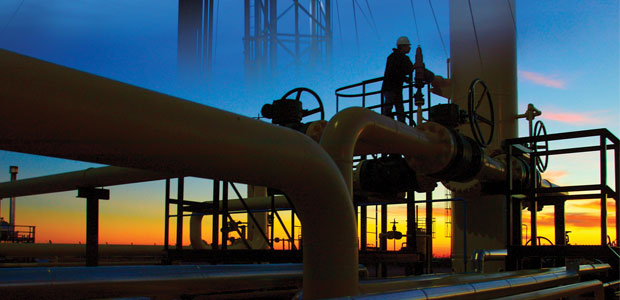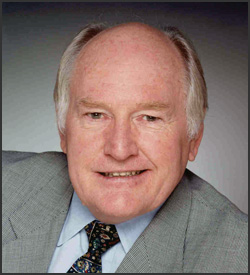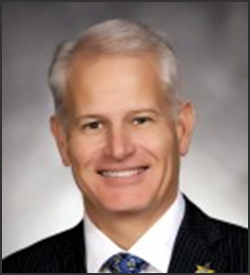
Resource Plays Transforming Supply, Demand
By Gregory DL Morris, Special Correspondent
WASHINGTON–The early evidence suggests the unconventional resource boom in the United States is not only beneficial to the independent producers leading it, but is also a definite positive for the entire national economy, according to Pete Stark, senior research director and adviser at IHS.
“Gross domestic product grew by 1.8 percent in 2011, while the preliminary forecast through the third quarter of 2012 is GDP growth of 2.1 percent,” he stated during a forum at the IHS Herold Pacesetters Energy Conference, held Nov. 13-14 in Washington. “That lift in GDP was bolstered by increased investment activity in both oil and natural gas.”
Stark also noted that while there was talk of a bubble in natural gas, the metrics actually showed some prudence. “Natural gas production grew by 15.7 billion cubic feet a day, or 31 percent, from 2007 to 2012, and that has offset liquefied natural gas imports predicted between 8 Bcf and 10 Bcf a day before the onset of the ‘shale gale,’” Stark said. “Ample gas supplies have generated record gas storage levels for the past two years, and we are on the verge of exporting LNG. This is a huge, unprecedented turnaround for natural gas.”
The huge story is domestic. Each 1 MMbbl/d of oil production translates to $30 billion in gross domestic product, and that is direct, without multipliers.
PETE STARK
Senior Research Director, IHS
All that points to a big boom in supply, Stark added. “But we also have seen the rig count in gas fields plunge by more than half, from 877 in 2011 to 413 in third quarter 2012. That follows a peak of 1,700 gas rigs running in 2007. This shows industry responding to high volumes and low prices, and will help to rebalance the market,” he remarked.
Returning to the point of LNG exports, Stark mentioned that a proprietary liquefaction facility at Kitimat, British Columbia, was expected to be among the early North American LNG projects commissioned. Explaining that producers with extensive holdings in northern British Columbia and Alberta need to move that stranded gas, and that Kitimat is well positioned to serve the lucrative Asian gas market, Stark commented, “The Duvernay Shale, a calcareous shale, looks to be the star of the future in Canada.”
Several speakers suggested the policy debate in Washington over LNG exports was largely missing the point because that decision already had been made in Ottawa. The U.S. and Canadian pipeline systems are interconnected, so the moment the first LNG tanker leaves Kitimat sometime in early 2015, continental North America will be in the natural gas export business. It must be noted that an LNG export terminal has been in business in Kenai, Ak., for many decades, but the Cook Inlet region is not physically connected to southern Canada or the rest of the U.S. market, speakers added.
Soaring Production Volumes
Stark was sanguine about all the shale gas and tight oil plays, especially the Bakken–including the Canadian Bakken–the Wolfberry, and the Eagle Ford Shale. “We are seeing close to 2 million barrels a day produced from tight oil and more than 7 million barrels a day of total liquids, which in turn, already is creating new export possibilities. Excess natural gas liquids will drive out liquid petroleum gas imports,” Stark predicted, with several speakers at the forum mentioning new ethane and propane export projects under way on the Gulf Coast and Eastern Seaboard.
“The downside to these shale gas and tight oil plays is a moving target,” said Stark. “We are seeing new Tcfs and new barrels coming into technically recoverable resources and onto the market on almost a weekly basis. We know the decline curves can be steep on these unconventional plays, but the level of discoveries keeps moving the net rollover point forward.”
Extending that logic, Stark stated, “The tight oil model has global potential. It is a silver stake in the heart of the ‘peak oil’ paranoia.”
Indeed the day before the Pacesetters conference began, the International Energy Agency released a report that projected, in part, that the United States was on track to surpass Saudi Arabia as the world’s top oil producer.
Reflecting on the attention lavished on that report, Stark commented, “People are excited about the United States becoming the top producer, but we have to keep that in context. Yes, total liquids production in this country is expected to reach about 12 MMbbl/d between 2018 and 2020. And current Saudi production is 10 MMbbl/d with no plans for that to be increased. But Saudi production capacity could be as much as 14 MMbbl/d.”
Again, Stark emphasized the bigger picture. “The headlines were all about besting Saudi Arabian production, but the real story is the total fundamental and structural change in the domestic liquids supply base in North America.
“The global implication is a moderation of price volatility overall as more production comes from politically stable countries,” continued Stark. “But the huge story is domestic. Each 1 MMbbl/d of oil production translates to $30 billion in gross domestic product, and that is direct, without multipliers. By 2020, liquids production from U.S. unconventional plays could contribute more than $200 billion to annual GDP.”
Amid the rosy long-term outlook, Stark injected a note of caution on costs. Increases in rig costs and availability are moderating in most plays, he said. Crews for fracturing jobs can be booked, and some personnel issues are starting to be resolved. “But more than half the cost of horizontal wells is associated with completions,” he noted. “Managing those costs will be a big area of emphasis for the industry.”
Stark also reminded his audience that 94 percent of tight oil resources were economic at $90 a barrel, but the percentage of economic resources declined rapidly below $60 a barrel, underscoring the fact that strong prices were fundamental to the economics of tight oil development.
“We are in the wake of a supply boom in natural gas, and we are on the cusp of a demand boom. The supply boom is baked into the price of the commodity already, but the demand boom is not.”
SETH ROBERTS
Director of Energy and Climate
Change Policy, Dow Chemical
Echoing Stark’s message of structural and strategic change in the North American domestic hydrocarbon economy, Seth Roberts, director of energy and climate change policy at Dow Chemical, offered a downstream perspective to conference delegates.
“We have seen a fundamental shift in the supply picture, but at Dow, we are not changing the way we purchase molecules, be that ethane as feedstock for our steam crackers, natural gas as a fuel, or other hydrocarbons,” said Roberts. “All that is changing is the volume, which is increasing, and the price, which generally has been decreasing, but not always.”
Dow, headquartered in Michigan, is the largest chemical company in North America and one of the largest worldwide, Roberts points out. It operates a vast integrated complex at Freeport, Tx., south of Houston, and a series of large facilities in Louisiana as well as many others around the country, Canada, and across the globe.
That international perspective, Roberts notes, allows him to offer some historical perspective on the unconventional oil and gas boom in North America and how it is changing downstream markets. “When hydrocarbons got tight and expensive in North America in previous decades, we did not stop making chemicals, we just stopped making them here. Now we are making more and more here again, and so are many other chemical, fertilizer, steel and other manufacturers.”
Roberts says he keeps an informal list of new U.S. and Canadian manufacturing facility announcements, driven by cheap and plentiful fuel and feedstock. “Two years ago, there was not even a list to make. Now, it seems that not a week goes by without some company detailing plans for some expansion or new plant. The impact on the economy is huge. We are looking at something like 5 million new manufacturing jobs from all the plans on our list.”
For all the excitement, Roberts acknowledges the missing piece of the puzzle is end-use demand for finished products, be they for the consumer market or for industry. “That final level of demand is coming. The economic recovery has been slow and uneven, but the shift is on. We are in a timing issue now, and that is the nature of commodity markets and capital-intensive industries.”
Demand Boom
At the time of the Pacesetters conference, Dow had begun to restart a battery of steam crackers that had been mothballed several years ago at its St. Charles, La., plant because ethane feedstock had become too dear. Roberts stated, “The United States has a competitive advantage over the rest of the world, which is still oil-based for the most part. Eventually, even those will respond to supply/demand realities and cost-effective production, but for now, we are excited about the affordability of natural gas and NGLs.”
In effect, Roberts said, U.S. industry “is using gas to make jobs and growth.” He explained that beyond the official government unemployment figures, the underemployment situation (people working, but close to the poverty line) is even more severe. “There is a sense of optimism now, and for manufacturing renewal, that all starts with competitive energy,” he related.
When there is talk of a sea change in hydrocarbon economics, Roberts was present at the shift in the tide. “I was on the global naphtha desk in Horgen, Switzerland, the headquarters of Dow Europe, when we saw the naphtha arbitrage closing into the U.S. Gulf Coast. It always had been cyclical, but suddenly naphtha did not want to go to the Gulf Coast,” he recalled.
In purchasing ethane, Roberts said Dow was finding an “ample” regional daily market. “The Gulf Coast region is more built out, and there is good price discovery. It is like a farmers’ market. There is also a sufficient spot market in Alberta for Dow Canada’s olefin and polymer operations there,” he commented.
In all spot markets, Roberts said Dow bought directly from producers, but also brokers and other middlemen. The company does have some long-term purchase contracts. What concerns Dow, Roberts emphasized, is the long-term availability of natural gas if LNG exports become a significant business. Dow has been very outspoken regarding its concerns about large-volume natural gas exports, and what that might do to prices and availability for large industrial users.
“We are in the wake of a supply boom in natural gas, and we are on the cusp of a demand boom,” Roberts commented. “The supply boom is baked into the price of the commodity already, but the demand boom is not. We are not opposed to LNG exports, per se. Dow supports free trade in energy and in all commodities, but that has to be nuanced, prudent, and balanced in terms of long-term supply and demand. It is essential to put LNG exports into the context of the domestic demand boom.”
Tripling Production, Reserves
“The scoop at the moment is SCOOP. It could be another Bakken, but there are lots of options across all of North America.”
RICK BOTT
President and COO, Continental Resources
Turning back to the upstream, Rick Bott, president and chief operating officer of Continental Resources Inc., suggested domestic producers were confident they could meet all the demands of the market. “At Continental, we have tripled production and reserves, so what is next? We held an investors’ day at which we released our next five-year plan, which calls for tripling production and reserves yet again,” Bott reported.
Delving into a little more detail, Bott explained that Continental, a major player in the Bakken, was looking for other areas where it might best be able to deploy its capital and expertise. “We have looked previously at the Eagle Ford and Niobrara, but any new investment must compete with what we can do in the Bakken. We have been talking with shareholders and bond investors to explain our five-year plan. To realize our re-tripling, we would have to achieve a 25 percent compound annual growth rate, which seems like a lot, but we actually have a 10-year development plan that is justified by our depth of inventory,” he stated.
Bott stressed that whatever tactics Continental used in working toward its five- and 10-year plans, “We will accomplish all that while maintaining top-quartile debt metrics versus industry peers. We got a good rate on our short-term revolver, $4.25 billion available at 4.625 percent. There is definitely liquidity out there.”
Continental’s development budget for 2013, Bott said, is $3.4 billion. “We have production of 100,000 bbl/d today, and we plan to be at 300,000 bbl/d in five years,” he announced. “We will drill 300 net (700 gross) wells, operating 30-35 rigs in 2013.”
Beyond those production plans, Bott added, “We also are going to spend $824 million to drill 110 net exploration wells over the next two years in the Bakken, the South Central Oklahoma Oil Play (SCOOP), and a few emerging plays. In the Bakken, we plan to extend the productive area geographically and vertically.”
Bott detailed three approaches to the company’s growth plans. “Most recently, in the lower benches of the Three Forks, we found similar reservoir characteristics to other productive zones in the play. We believe those benches will be productive, and this investment plan will help us accelerate reducing risk in the play and allow us to move more quickly to full-field development.”
Second, he said, was downspacing. “There have been 5,500 wells drilled in the Bakken, and that is less than one well per 1,280-acre unit. We are looking at going down to 320-acre and then 160-acre spacing in our pilot programs. It is going to be very exciting,” he offered. “The exploration drilling and the downspacing could add 4 billion-7 billion barrels in the Bakken, and that is unrisked.”
Third are other emerging plays. “The scoop at the moment is SCOOP,” he quipped. “It could be another Bakken, but there are lots of options across all of North America. In 2013, we will ramp up activity to delineate the play with 12-15 rigs working by the end of the year.”
Bott also identified a few key management points that Continental would use to guide the company through its growth plan for the next few years. “We are going to focus on cost control, on new technology, and on operational efficiency. We like to see what we can do with the drill bit. For example, our trademark ECO-Pad® drilling operation effectively brings an offshore platform mentality to the onshore,” he said. “It greatly reduces our footprint on the ground in addition to providing operational efficiencies.”
More broadly in the Bakken, Bott illuminated some of the important structural improvements that would enable the basin to realize its full potential. “In 2012, we finally saw a real break in take-away capacity,” he recounted. “We saw in excess of 900,000 bbl/d of pipeline capacity built or committed. We also saw the same amount of rail capacity built or committed. That has been a big winner. The infrastructure is finally catching up to the production potential.”
Continental’s role, Bott continued, “is trying to commit the crude to help ensure that those projects actually do move along. We are trying to work with refineries as much as we can. As much as 97 percent of the Bakken barrel can be refined into high-end cuts such as gasoline, diesel fuel and distillate. It is lower in sulfur than West Texas Intermediate and Brent.”
Bott said he expected Bakken crude to eventually trade at a premium to Brent, minus transportation costs. “Our crude will be going to every processing center on the continent, and as it does, we will see the differential narrow and then be reversed,” he predicted, adding that Bakken oil production was proving a powerful economic force.
“We are seeing refining capacity that had been mothballed, or was going to be shut down–especially smaller or inland facilities–being saved because of the availability of domestically produced, light sweet crude such as the Bakken,” Bott confirmed. “Refiners are investing in rail receiving and offloading, and are back in business.”
For other great articles about exploration, drilling, completions and production, subscribe to The American Oil & Gas Reporter and bookmark www.aogr.com.

















